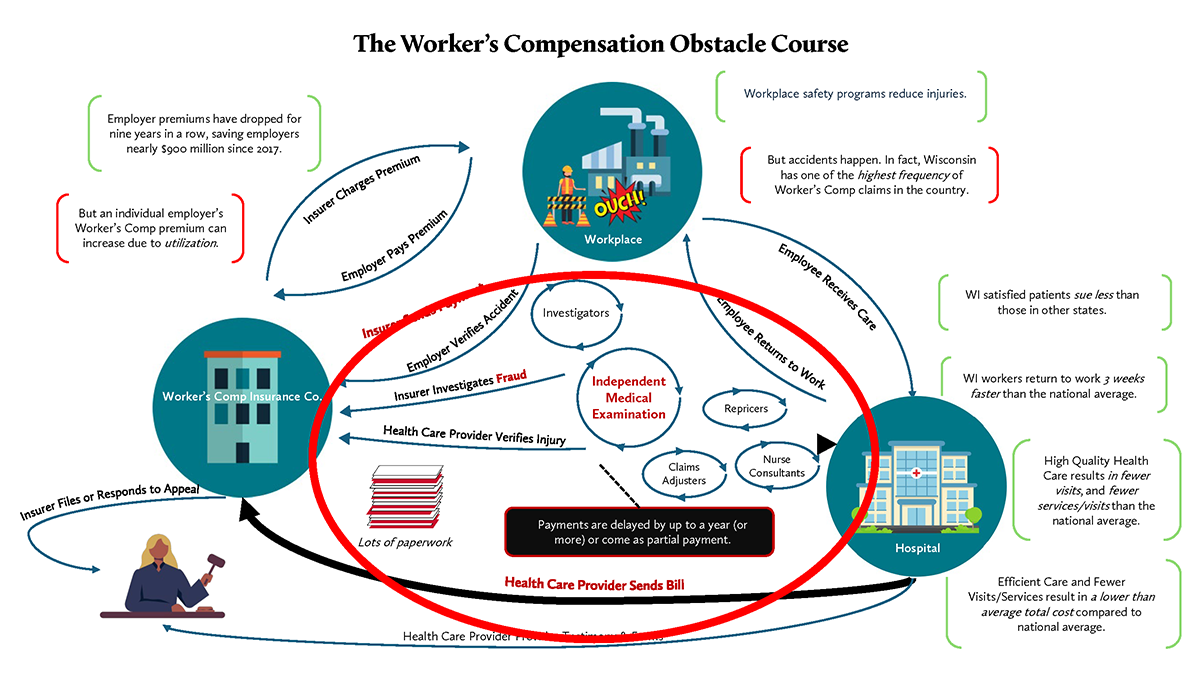The Wisconsin Compensation Rating Bureau (WCRB)
announced this week that the Wisconsin Office of the Commissioner of Insurance approved an overall 10.50 percent decrease in worker’s compensation insurance rates effective Oct. 1, 2024. The reduced rates are expected to save Wisconsin employers more than $208 million next year.
This is the ninth consecutive decrease in Wisconsin worker’s compensation rates, following an overall decrease of 8.39% last year and 8.47% in 2022. In WCRB’s
2022 State of the State, President Bernard Rosauer touted the rate reductions, writing, “The consecutive worker’s compensation rate decreases are remarkable and are partially driven by important factors in which Wisconsin excels compared to many other states. Wisconsin’s results are partially driven by superior return to work, low litigation rates, low benefit delivery expenses, and superior (injured) worker satisfaction.”
In WCRB’s
2023 State of the State, Rosauer wrote that the decrease can be attributable to several factors, such as increased focus on safety training, advancements in technology, and increased workforce experience. Consistent with Rosauer’s observations, Ascension’s Maria Montella Pascente, director of operations and business development, Wisconsin Employer Solutions,
testified earlier this year during a joint Wisconsin Senate and Assembly committee hearing on a bill that proposed a medical fee schedule for the Worker’s Compensation program, “As a full service occupational health program, Ascension Wisconsin works with companies to ensure their employees are taken care of throughout the course of their employment. Our focus is threefold: assisting in the hiring of candidates who can perform the physical demands of the position; supporting injury prevention on the job; and enabling a safe return to work for anyone injured.”
Pascente also emphasized, “The clinical care model for injured worker care is unique in itself. In fact, the process of administering Wisconsin’s Worker’s Compensation program is so complex and administratively burdensome that we have a dedicated team to serve this population through Ascension’s Employer Solution.” She continued, “These processes often double and triple the time we must spend to successfully receive the appropriate payment, by comparison to standard insurance claims.”
In response to the announced decrease, WHA President and CEO Eric Borgerding said, “We, of course, are pleased to see the ninth consecutive worker’s comp rate decrease. But regardless of the program successes and instead of addressing the inefficient and costly claims system that feeds a myriad of case reviewers, care authorizers, and other interested organizations, there will be some in the business community that, again, will want to debate whether legislators should impose a medical fee schedule on health care providers caring for injured workers. The business community’s advocacy for government rate setting through a fee schedule has been successful for them only in that it has distracted policymakers from the true issues in the Worker’s Comp program – the explosion of middlemen who complicate and add cost to the system.”
